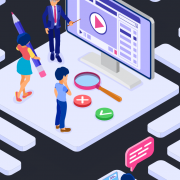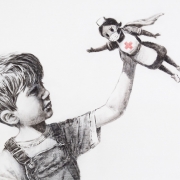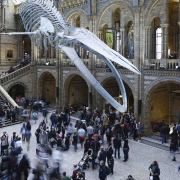Christine Barling
Leader of Learning Arts, MYP Drama/DP Theatre teacher, DP Advisor
Sotogrande International School
Covid 19: Why the Arts? Now more than ever
Featured image by Banksy: Game Changer
I would like to share with you my thoughts about the place of the Arts within this current pandemic and why I believe that to be an Artist &/or part of an audience is more important than ever.
To understand
The Arts are life. Drama, Music, Film, Visual Arts, Dance; they all help us understand the world around us. Through these captured moments we learn more about ourselves and each other. They put life under the lens for us to explore and interpret. The world is FULL of drama right now and to stop and distil the whirl of news and social feeds for a moment allows us to reflect and consider. Through better understanding we can think about how we can best respond. Maybe we want to help bring about change, maybe we want to help support someone struggling or maybe we just need to find a way to get by and through this ourselves. These are challenging times and if we get lost in the stream of facts and stats then we will completely lose a sense of what is really happening and who we really are.
“Science helps us solve problems but the Arts is how we cope with them.” -Street artist David Zinn
Through the study of Verbatim Theatre M4 Drama students created monologues recreating a range of experiences of being in Covid 19 Lockdown.
The Lockdown Monologues performed by M4 Drama students (June 2020)
To be together
We all know how hard it has been being forced away from the people we love or care about. Many have found it very hard being in isolation with restrictions both on our movement and interactions with those around us. The Arts connect us together in a way like no other. Whether it is talking about a new series on Netflix, sitting together in the pre- show buzz of the auditorium or thrashing out power chords jamming as the guitarist in a band we take both solace and delight in having these experiences together. Best of all is when we can actually work together in creative collaboration. Creating a piece of artwork that can be shared with our own community or an even wider audience. This is a challenge with social distancing measures in place but with creative vision and a strong collaborative goal in mind we can break out of this restrictive confinement in a way that is still reaffirming, celebratory and still safe.
A great example is when the M3 Music students worked together to create this dynamic rhythm ensemble – Creating, collaboration, designing, performing, working to a schedule, and of course learning how musical notation works.
Drumming and beats performed & edited by M3 Music students (Oct 2020)
A highly impactful and pertinent exploration of what it can feel like to feel isolated and alone was developed through an M4 piece of film work. Many of us, during this difficult, time have felt strongly about not being allowed to be together. The Arts create an empathetic connection between the Artist and audience that makes us feel that in fact we are not alone and there are many life experiences that, in truth, we go through together.
I am not Alone: Music video by M4 Film student (April 2020)
TO LAUGH
“Art washes away from the soul the dust of everyday life.”
― Pablo Picasso
2000 years ago the Greek playwright and philosopher explained how an audience could experience catharsis or a kind of emotional purification through a performance experience. This is basically that feeling you get after you have had a tough day and then watch a movie that makes you cry or laugh and you feel a whole lot better afterwards. Stand up comedians are brilliant at doing this for us. They can turn the most horrific narrative on its head and have us in tears of laughter. Humans also have the ability to laugh at themselves and through this self mockery find not only emotional release but a fresh perspective through which to critically analyse a reality which at times is too intense and intent.
Our M2 students have been writing their own scripts inspired by “10 Ways to Escape a Zombie Apocalypse” by Don Zolidis. Creating satirical and ridiculously exaggerated scenes that mock the apocalyptic and dystopian narrative that they are currently having to live through during this pandemic.
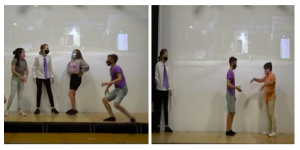
With schooling on site shutting down and students in complete confinement they used their fully scripted scenes to write and perform satirical monologues focusing on one of the highly hyperbolic ´stories´ of a protagonist. This was also a great opportunity for some home spun creative explorations of dramatic production elements.
Monologue by M2 Drama student (March 2020)
Monologue by M2 Drama student (March 2020)
The ability to laugh at ourselves is a unique and very human quality. This hilarious and touching parody of a dinner date is a gentle mockery of the vulnerability and need of us all.
The Dinner Date by M4 Film student (May 2020)
Amidst the stress of exam uncertainty, revising online, submitting final EA coursework the D2 Theatre ensemble took time out to create this gentle mockery of teachers and students learning virtually to share at their D2 graduation event.
Trailer for D2 Theatre Online Learning skit (June 2020)
TO ESCAPE
“Art enables us to find ourselves and lose ourselves at the same time.”
― Thomas Merton , No Man Is an Island
Time out. Time out on the pandemic, time out on the positive Covid counts, time out of the ´new norm´. Enough already! Just a couple of hours in front of a movie, just half an hour to listen to a few tracks on Spotify, just an afternoon alone with a sketch pad and 2B pencil. The Arts transport us to an alternative reality where we can disconnect, realign and recharge.
In DP1 Music students discussed, If you could only take 3 tracks with you into Lockdown, which ones would they be and why? This was very thought-provoking as it raised all sorts of ideas about escapism and connecting with other moments in your life. One D1 Music student chose tracks by Ludovico Einaudi, Drake and Hang Massive. All tracks are very different in terms of genre and instrumentation.
Warmth of the Sun’s Rays by Hang Massive
During lockdown where students were not even allowed to step out of their front gate for nearly 3 months we invited students, parents and staff to submit their best 10 photos of the week to be shared and enjoyed with the community on social media platforms. In total over 1,000 photos were submitted where each and every one was beautifully evocative in encapsulating a moment within this surreal very personal experience. Through these photos we gained an insight into how this artistic initiative encouraged the individual to step out of their more repressive mental and physical confinement. Escape was through a lens that focused the mind elsewhere and captured an alternative perspective of the reduced world around them, often celebrating the miniature of what they now had time to note: A view from a window, a flower in the garden, a family pet.
These are a selection of the winning photos, judged by our online visiting international professional photographers.
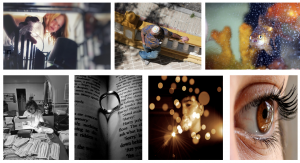
TO GIVE VOICE
Through the Arts we can choose to transform from passive spectators to the unravelling events to active participants on the stage of life. Knowing how to effectively voice an opinion and present an impactful message is increasingly vital in a society where the authentic voice is drowned out or even manipulated by the barrage of news and social feeds we get on a minute by minute basis. Never was truer a word said than “Don´t believe all you read in the (pandemic) papers.” It may all be ´good and true´ but we should be a questioning audience who can voice an opinion response to what we have been told. Through the Arts we ourselves gain a sense of audience and develop the ability to take ownership of how we ourselves want our own voices to be heard. Often this voice is not a personal one as we step into someone else’s shows to explore, interpret and present alternative perspectives and ethical viewpoints
“Art is not what you see, but what you make others see.”
― Edgar Degas
In M3 Drama SIS students explored the work of Brazilain theatrical practitioner Augosto Boal and Forum Theatre to analyse their own assumptions and investigate the perspectives of those around them. These were then voiced in performance work that asked the audience to consider the impact of messages conveyed through social media.

Three step collaborative, visual exploration of Boal´s alternative narrative structure. Individuals drew on ubiquitous experiences – social distancing and mask wearing – to asynchronously formulate the story of a dog that is adopted and confused by a family voluntarily wearing muzzles. This led to a practical exploration and analysis of the different perspectives considered during the creative process (May 2020)
TO DISCOVER
….or even rediscover. Through the Arts we learn more about ourselves and the people around us. Through creative exploration we can develop and present shared experiences and narratives. Recognising or recalling moments that we have in common. Being taken on a journey of another person or travelling down a path of personal self discovery is life affirming and provides us with comfort in troubled times.
Our M1 Visual Arts students were asked to recall a moment of feeling loved. These moments were recreated using the soft and warm focus of Impressionist artistic technique. With some young (and older) people feeling unsafe and insecure, how validating to remember that we are loved and cared for.
Moments of Feeling Loved by M1 Visual Arts students (Oct 2020)
The artwork below is a by SIS DP2 Visual Arts student (March 2020) exploring the concept of how the artist can symbolise the constant liminality of identity and therefore symbolise how herself as a young girl is drifting into the unknown. The self discovery of your identity as you come of age and grow up. Representing this in a body of water helped convey fluidity of how identity is always changing and the path to self discovery is constantly in flow.
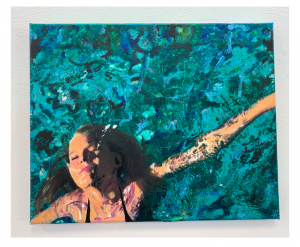
Floating into Abyss By Leonie Withoeft
TO FIND JOY
You may have seen the latest viral trend. Doctors, students, firemen, famous pop artists…all recreating a South African Wedding choreography to the song Jerusalma. Someone asked me “ Why do you love this so much? What is the point of it?” That is EXACTLY why I love it so much. There is no point as such. In a world so meaningfully serious and ridden with viral anxiety, how wonderful to celebrate life in a way that is essentially meaningLESS and so joyful. The Arts remind us that there is light in the darkness of all this madness and reason. Reason enough is just reason for being. The joy of being here, now and in the moment.
All our M3 students joined together to recreate Jerusalema in a moment of pure, uncomplicated enjoyment.
Jerusalema Dance by M3 students (Sept 2020)
TO EXPRESS
Arts is all about expression. Self-expression, group expression, expression of the other. Artists take risks in exposing a truth that cannot or would not otherwise be seen or heard. A truth that often needs to be shared. The Arts are a highly impactful platform through which to communicate something essential about ourselves and/or the world around us. Through this expression, we can learn and grow and often bring about change for the better.
During Lockdown DP1 Music students were looking at atonal music and serialism. This music was developed by Arnold Schoenberg following a difficult period in his own life but it also gained popularity following WW1 as it was felt that it reflected the emotions of people at that time.
DP2 Music student composition using serialism and the twelve tone scale to express anxieties caused by Lockdown (Sept 2020)

´Leap of Faith´
Photograph by D2 SIS Visual Arts student (March 2020)
TO CHANGE
Good Art brings about change, even if only in the most infinitesimal amount. Good art changes the way we see the world and/or the ways in which we see ourselves. Good Art makes us want to bring about change. It prompts us to action for the better of ourselves or others. Arts can also be personally transformational and even more so if you are involved in the creative process itself. Making Art can make you more confident, more expressive, more knowing and more empathetic. Whilst many of us are coping with a loss of identity and a confusion of emotions as we wonder what kind of person we want to be throughout this time of crisis, Art can help us become the best versions of ourselves.
Afternoon written and performed by M3 Film student exploring the concept of relationships and making personal connections.
One Minute Movie by DP1 Film Student exploring how even the smallest of gestures can make a big difference for those struggling during this pandemic.
SO WHY THE ARTS?
I would like to ask all those data-driven, stern and apocalyptic voices out there “How can being an Artist NOT be vitally important given the way of the world at the moment?” “Who else is going to fill the huge void left if we slice out the soul of our society?” As a teacher and parent, I believe more than ever before that we need to help our children find a way to source, access and become involved in some form of artistic outlet. I would like to ask YOU as an adult in this struggling world to do everything you can to help the next generation find their creative voice and encourage them to shout, dance, act, rap or blaze in a bold array of colours across this grasping world of ours.
When things seem to be falling apart around us we look to each other and we look to the Arts. It is now that we need to see, hear and feel the Arts more than ever.
The examples of linked work above have been created since the outbreak of Covid 19 by MYP1-DP2 Arts students at Sotogrande International School. Some of these were experiences created whilst all of our students were confined within their homes for 3 months and some are from when most were able to return to school, with some still joining the creative explorations as online students working virtually.
What do you think about the points raised in this article? We’d love to have your thoughts below.
ABOUT THE AUTHOR

Christine Barling teaches MYP Drama and DP Theatre and is Leader of Learning for the Arts at Sotogrande International School, Spain. Even in a non ´new-norm´ world, Christine is a staunch supporter of how the key skills taught through the Arts are absolutely essential in helping students become fully effective people and learners. Christine also is a strong believer in using the Arts as a platform for change and for better understanding the world around us. When returning to site after lockdown she started the term thinking we should just temporarily ´move to bin´ Drama…considering all the restrictions of masks, distancing and limited movement. Better to give the drama studio over to put out desks 1.5 metres apart for other subjects so desperately searching for more space? How wrong she now knows she was! As the term has unravelled it has become more apparent than ever how important the Arts are for the well being of our students. Every Arts teacher out there will testify that delivering an Arts lesson in Drama, Dance, Film, Visual Arts or Music is far from easy at the moment but even on the most difficult of days we all know deep down that does not mean it does not need to be done.


